A College QB's Suicide. A Family's Search for Answers.

Editor’s Note: The following contains graphic content that some might find disturbing.
Watch Losing Tyler on SI TV. Our latest documentary chronicles the Hilinski family’s search for answers in the aftermath of tragedy.
Cards and collages line the entryway to the Hilinski family’s home in Irvine, Calif., everything signed with My deepest condolences and promises of prayers. There’s an oar from the University of Minnesota football team, a note from the Seahawks’ general manager and 20,000 wristbands stuffed in boxes, each stamped with a red number 3 and two words: Hilinski’s Hope.
The messages arrive daily, reminding the family of its new dichotomy. Now, there’s before Jan. 16 and after, life with Tyler and without him. It’s the difference between the photo the Hilinskis cling to and the envelope they cannot bring themselves to open.
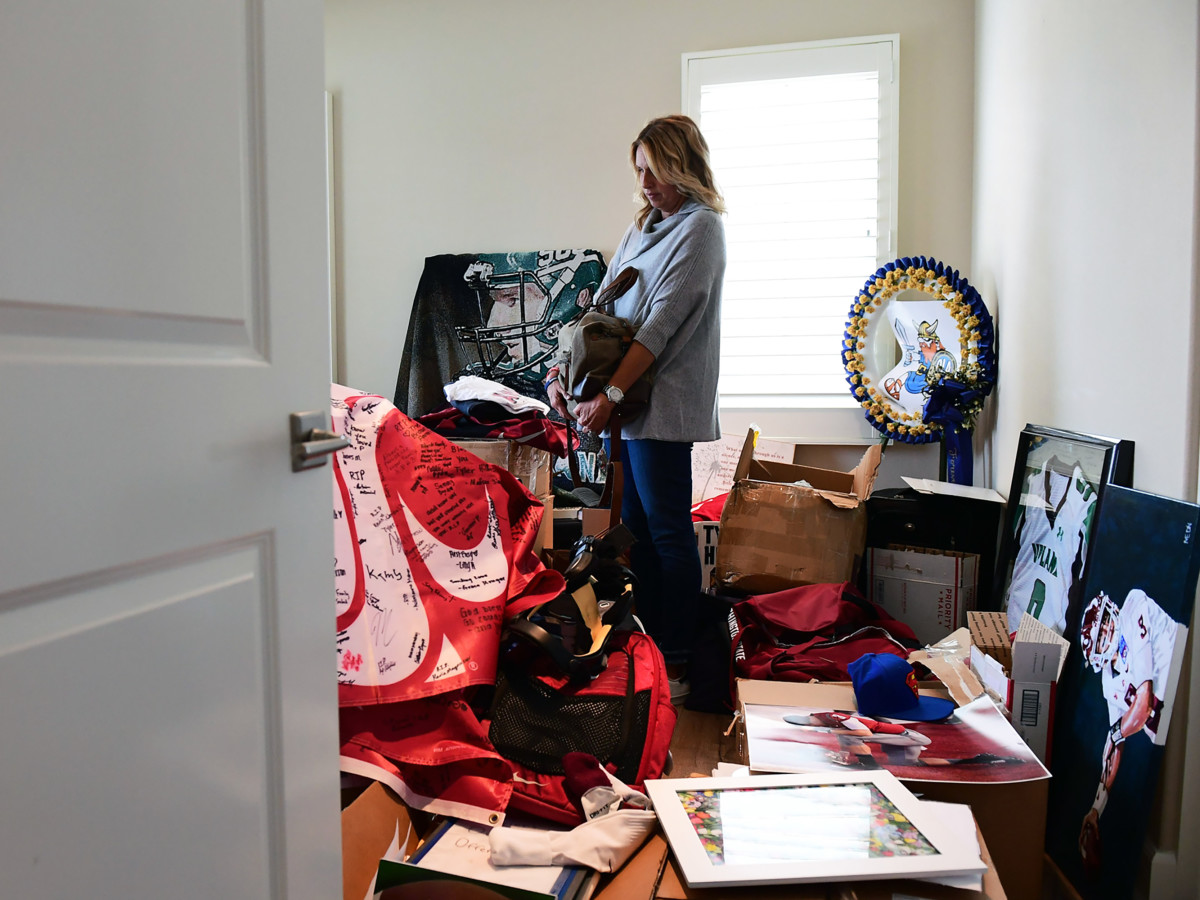
The framed picture is blown up and rests on the floor of the entryway, against the wall. It’s what Kym Hilinski, the family matriarch, looks at when she wakes at 2 a.m., thinking things she had never thought, like, I hate my life. Her middle son, Tyler, never seemed happier than in that photo. It was taken on Sept. 9, 2017, four months before Kym carried his ashes through airport security and covered the drum set in the music room with wilting flower bouquets. Tyler is centered in the frame, wearing his crimson number 3 Washington State jersey, surrounded by fans reaching out to touch him. That’s her Sweet T, her Big Ty, her Superman. Even though he’s the backup quarterback, Cougars fans are carrying him like a deity off the field after he threw for 240 yards and three touchdowns in a triple-overtime 47–44 conquest of Boise State—the best game of his life.
Kym, as usual, covered her eyes with her hands at Martin Stadium that day. Tyler’s older brother, a medical student named Kelly, was halfway through his graveyard shift at an Ogden, Utah, hospital, stealing glances at his laptop between calls to the ER. His father, Mark, and his younger brother, Ryan, were at home in Irvine, causing such a ruckus that neighbors stopped by to check on them. Eventually, Kym found Tyler on the field, just after the photo had been taken. He put his arm around her. “Did that just happen?” he asked.
The photo showed Tyler as they knew him, before he entered a closet in a Pullman, Wash., apartment and fatally shot himself. Before the family needed answers and resolved to find out why. Now, the image both comforts and haunts the Hilinskis, reminding them of better times, together, as the closest of close-knit football families. But it also makes them wonder. Was Tyler’s happiness that day just a mirage?
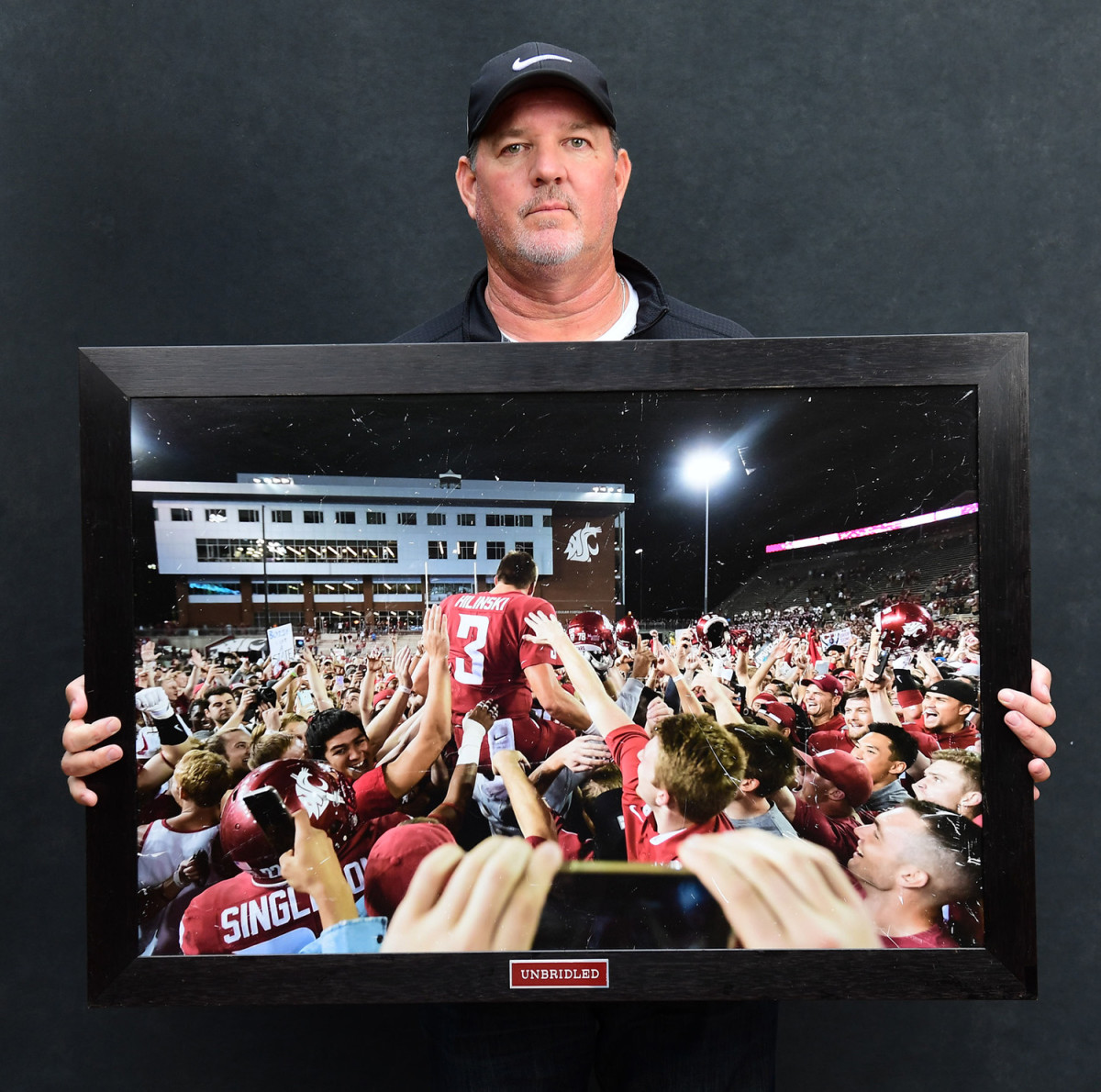
Inside the adjacent living room, the picture is surrounded by binders stuffed with research on depression, suicide and traumatic brain injuries, as well as a letter from the Mayo Clinic that contains a potential clue—the autopsy of Tyler’s brain. The three letters that further complicated everything.
At the placemat nearest the photo, where on his final visit home Tyler might have eaten breakfast, there’s a Priority Mail envelope sealed with masking tape. It’s from the Whitman County Coroner. Roughly 10 feet separate the picture and the envelope, and yet the gap between what they represent—Tyler’s seemingly happy life and his inexplicable death—is vast. Closing the chasm between those two realities is the Hilinskis' most obvious path to closure. What they learn could soften their pain and lessen their confusion, pushing them forward, into mental health advocacy, where they can assign deeper, lasting meaning to Tyler’s life. The Hilinskis have been told the contents inside the envelope are graphic and even though they want to know, even though they have to know, they have not been able to open it. Not yet.
On the afternoon before he killed himself, Tyler Hilinski learned how to use a gun. His roommates say they had never even seen him hold a water pistol, and yet he took advantage of a rare sunny winter afternoon in Pullman to shoot at clay pigeons with several teammates. They taught him how to hold, aim and fire, then spent the last 15 minutes of their session coaching him up, cheering him on. He didn’t hit a single target.
Tyler spent the night playing Fortnite with teammates and his brothers, signing off after a six-hour session, only after they had won. When he woke early the next morning, he sent a group text to his wide receivers reminding them of a workout scheduled for 3 p.m. At 10:25 he pinged his ex-girlfriend and high school sweetheart, Sophie Engle, I’m sorry for everything. He also told his older brother he wanted to play Fortnite again later. When Kelly called later that morning, Tyler said he was in class.
“I love you,” Kelly told him.
“I love you too,” he said.
Tyler was moving into a new apartment and dropped off one of his new roommates, defensive lineman Nick Begg, at class around 11. That was the last time anybody saw or heard from him. When he didn’t show up for an afternoon workout, it was not only unusual—this was Tyler Hilinski, the most dependable of coach Mike Leach’s players—but also alarming. Enough so that Antonio Huffman, the assistant athletic director for football operations, dispatched Begg and fellow roommate Peyton Pelluer to search for him. After they failed to find Tyler at the apartment or at his girlfriend’s place and they couldn’t locate his car, Huffman called local hospitals and police departments, and urged officers to put out an APB.

Huffman phoned Tyler’s parents. Kelly sent Tyler a text, offering to leave that minute and drive the nine hours from Ogden. “I thought, maybe, by being there, I could shake him,” Kelly says. “I could look him in the eyes and go, what’s going on?”
Begg could sense the panic in Kelly’s voice, rising with each call, cresting when Kelly noticed that Tyler had stopped sharing his location on his cell phone. The players doubled back to Tyler’s old digs, the Aspen Village apartment complex, where they found his car hidden in the back lot and saw his passport had been ripped apart and left in the vehicle. They pleaded with the apartment manager to unlock the unit, and when the manager refused, Begg and Pelluer stalked through overgrown grass to Building D and kicked in the green door to apartment 201. They checked the living room, then the bedroom farthest from the balcony, then the one adjacent to it. And once inside, Pelluer, looking into the open closet, saw Tyler, with the AR-15 lying next to him, a bullet hole through his left eye.
Huffman arrived just after the police officers, who looked at him and shook their heads. One just said, “I’m sorry.” Huffman phoned Kym, who threw her cell and called him a liar before suffering a panic attack. She spent part of that night in the hospital, wondering the same things that Mark wondered after he begged his oldest son to be wrong and after the organ donation organization called to ask about Tyler’s right cornea. Why hadn’t they seen this coming? Why?
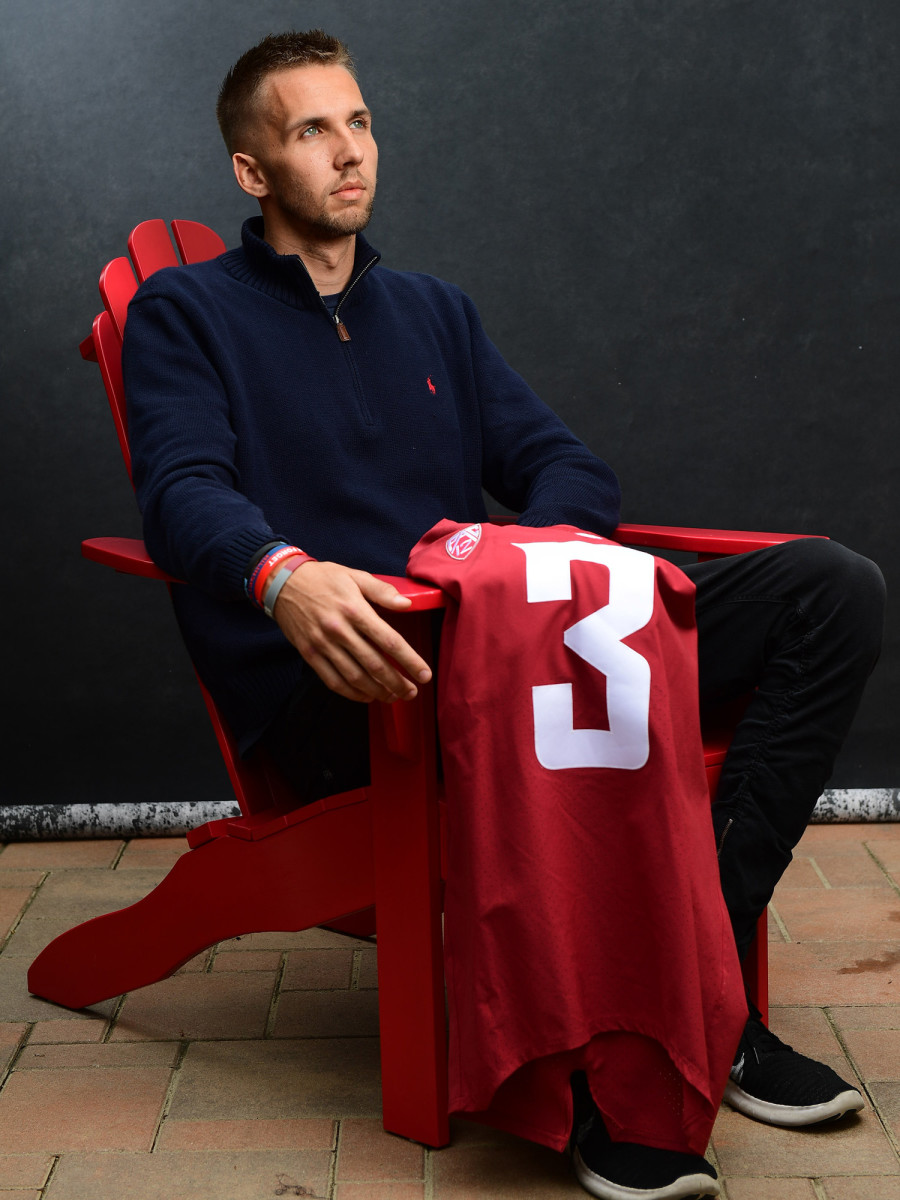
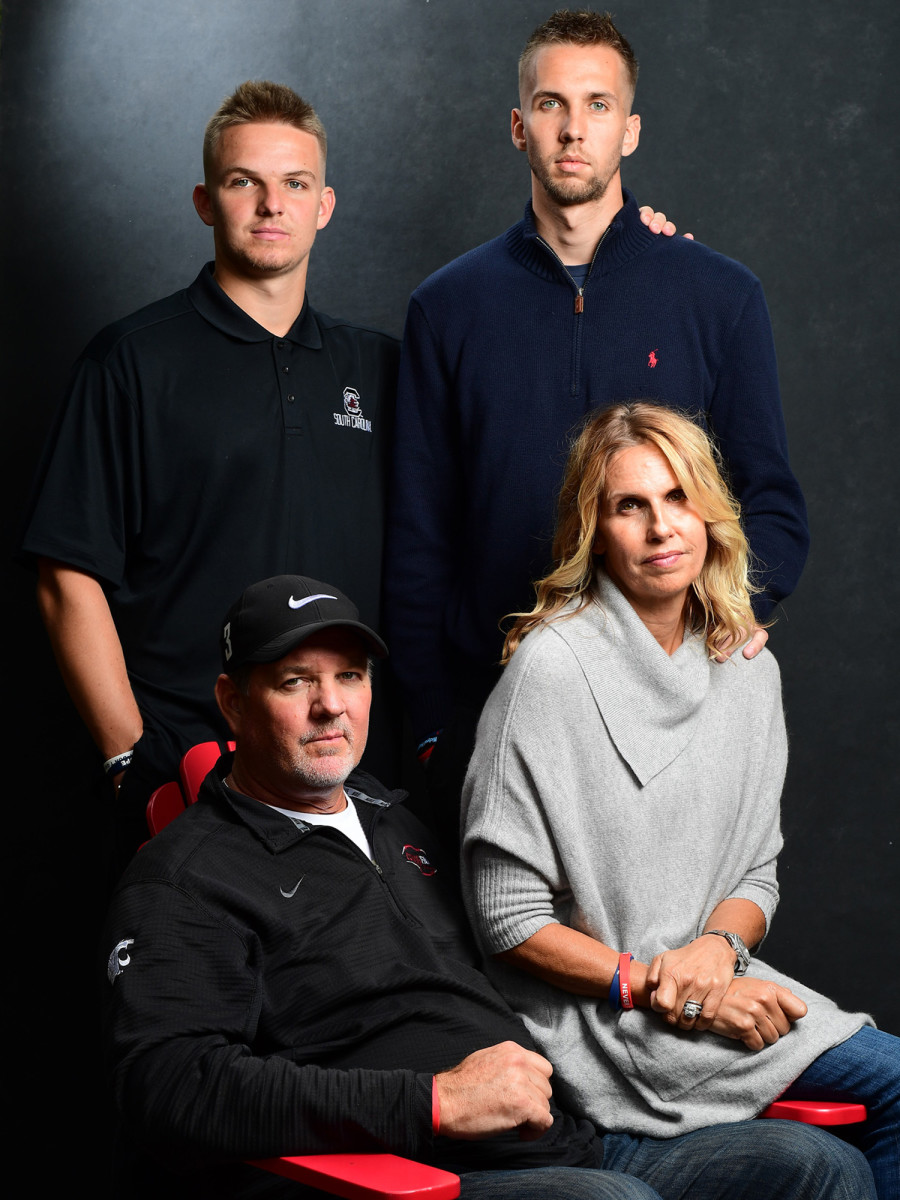
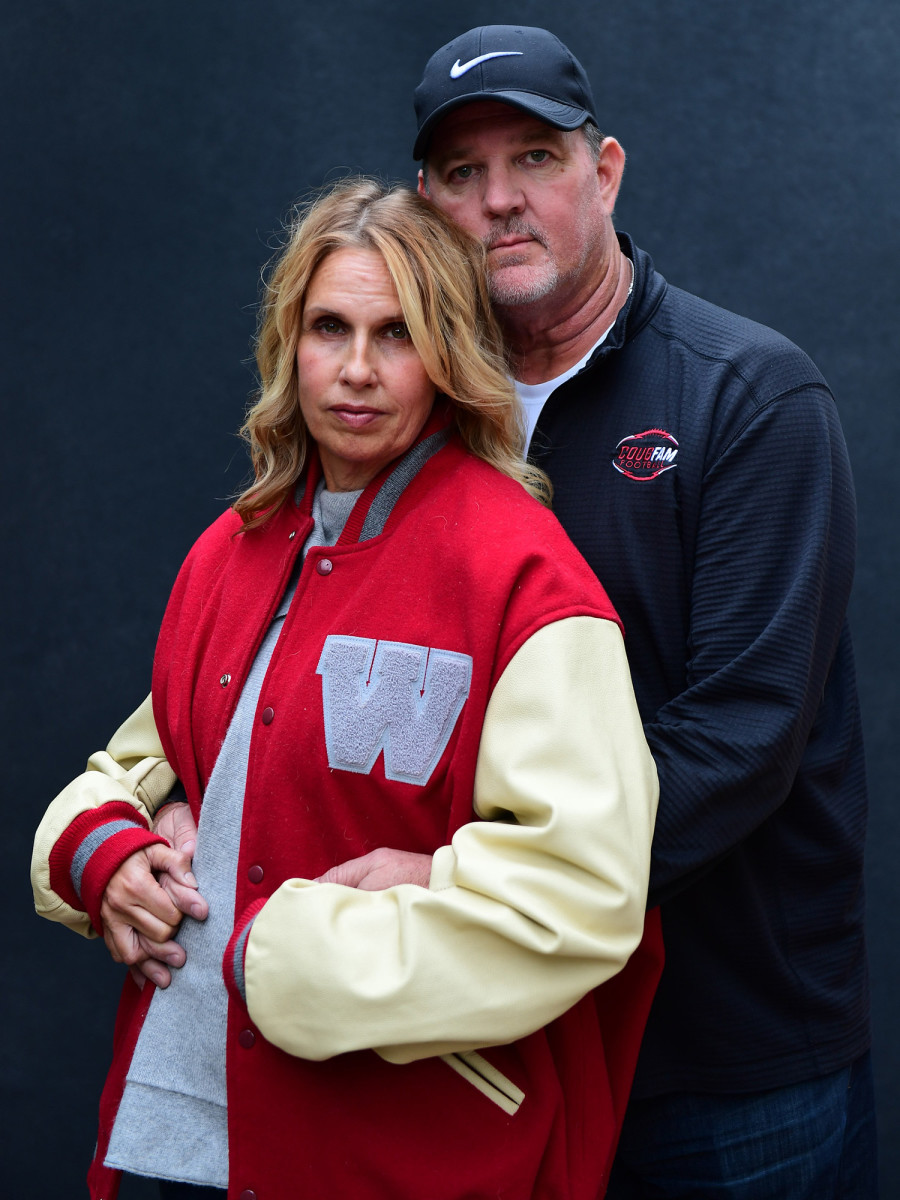
Beginning that night and over the next few weeks and months, Mark and Kym would replay countless moments in their lives—starting with when they first fell in love, got married soon after college and had three boys who would gravitate to the same sport and the same position. Tyler was born after Kym’s water broke at Nordstrom and she hurried to the hospital, clutching her husband’s hand so tightly her knuckles whitened. “I did not let the nurses take [Tyler],” Kym says. “He slept on top of me.”
The Hilinskis were not a football family then. Mark, who later founded a software company, played quarterback and defensive end at Damien High in La Verne, Ca., and rooted for the Steelers; Kym, a lawyer, was a cheerleader but ambivalent about the game. The Hilinskis wanted to expose the boys to everything, so they skateboarded, took guitar lessons, played tennis, basketball and baseball.
Tyler was the easiest of the three. He never cried, never fussed. He loved action movies and video games and singing in the car at full volume. They found him goofy, and when he laughed, his nose scrunched up, reminding Mark, 52, of a young Jon Gruden.
The Hilinski brothers looked out for one another, although Tyler was the least confrontational. In fourth grade he tried to ignore a classmate who teased him for weeks about eating his peanut butter and jelly sandwiches on Hawaiian bread. Eventually Ryan, then a kindergartner, punched the bully in the face. Kym scolded Ryan, told him never to strike anyone, but she later told Kelly she was proud of her youngest, reminding him to “put your brothers and family before anyone.”
Tyler idolized Kelly, following him everywhere, especially into football. Mark and Kym had never planned to raise three college quarterbacks but all their boys grew tall and strong and possessed right arms that could whistle spirals. Quarterbacks they became. If Kelly and Tyler played on the same team, Tyler sometimes lined up at receiver, and in youth leagues, he played linebacker, earning the nickname Mini Urlacher for his punishing tackles.
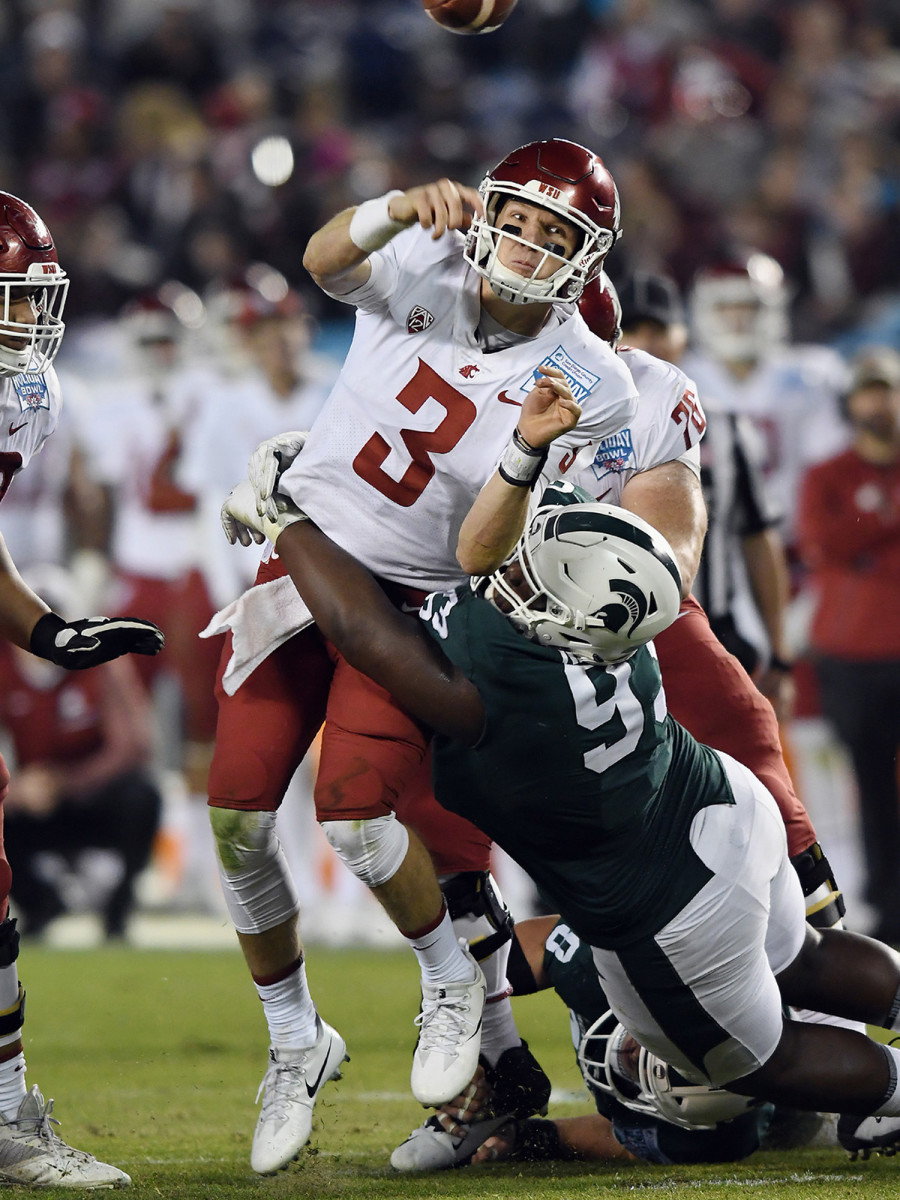
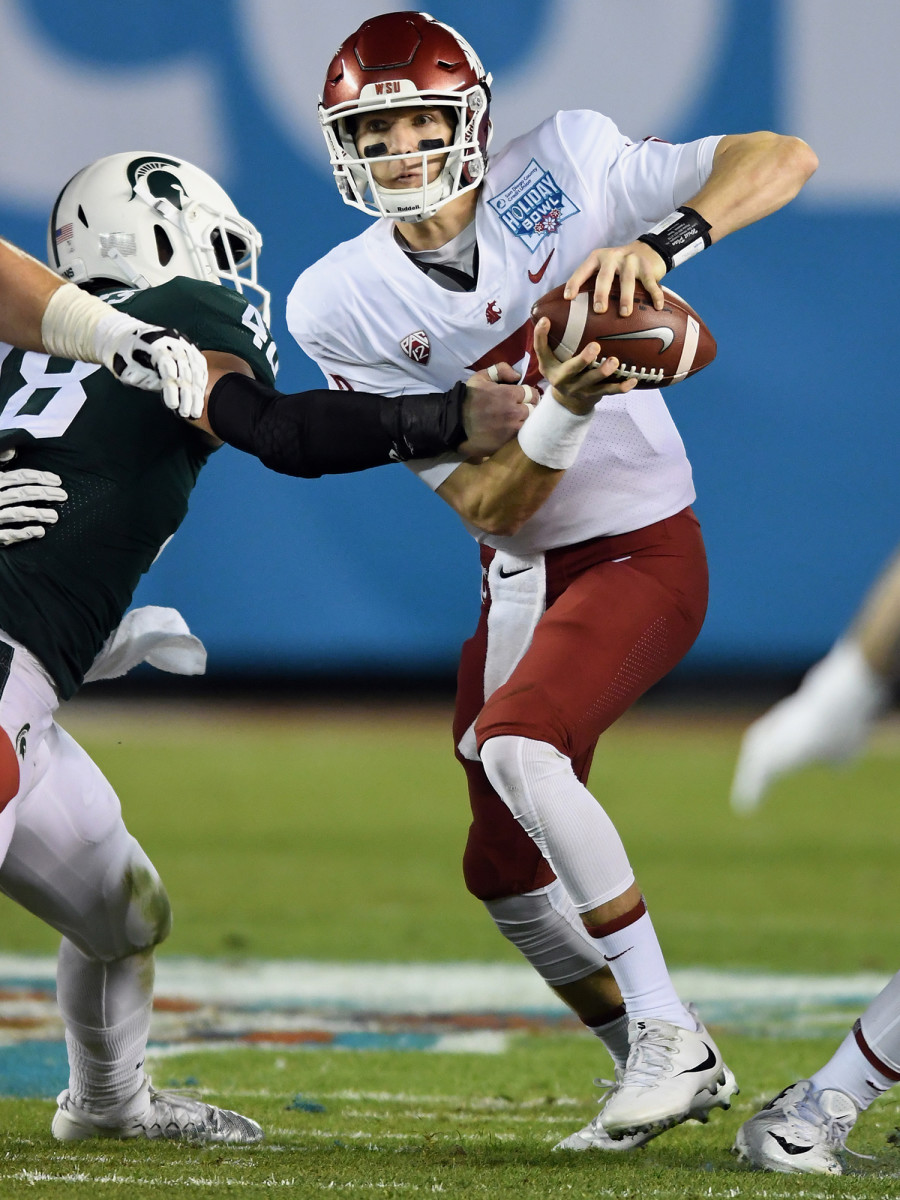
As Mark and Kym looked back, they winced at all the hits Tyler delivered and endured. Kym, 53, had always worried about her football-obsessed sons. She preferred watching them in seven-on-seven camps, where defenders can’t touch quarterbacks. “I usually cover my eyes,” she says. “I’m so nervous that a big, gigantic linebacker is just going to come and truck my son. If I could Bubble Wrap them, I would.”
She also knew that her boys loved football more than they loved anything except one another, so she reluctantly drove them to practices and brought snacks to their teammates. Before Tyler’s junior season, he transferred to Upland High and won the starting job. He played like a lanky Brett Favre, scrambling, improvising, throwing no-no-no-no-YES! touchdowns off his back foot or across his body. Tyler’s coach, Tim Salter, called him Superman, in part to remind the quarterback he didn’t need to be heroic on every play. “But I do,” Tyler said.
At Upland, Tyler met Sophie Engle, and they dated for most of the next three years. They spent most weekends on the Hilinskis’ couch, playing with his yellow lab, Navy Blue, watching movies, ordering zucchini fries and engaging in burping contests. All those memories squared with the Tyler his family members knew; looking back at the first 18 of his 21 years, they had found no clues.
One story from years ago that Engle shared with the Hilinskis recently took on greater meaning after his death. She said she once told Tyler about a friend who had committed suicide, detailing the excruciating pain felt by those the friend had left behind. “You never know what someone’s going through,” Tyler said. “That’s so sad.”
Over those weeks and months, as he reviewed the events in Tyler’s life, Mark reminded himself to be realistic. “I’m not trying to canonize the kid,” he says. “I’m not trying to make him better than he was.” Moving from Tyler’s high school days into his college life, he saw what appeared to be the typical issues of early adulthood and wondered if they signified something more. If he scrutinized hard enough, there were signs. But how far back? Which were real?
Tyler chose WSU over the other four schools that offered him a scholarship, graduated early and arrived on campus for the spring semester of 2015. That first week he called home to say that he felt sad, as if he wanted to cry. “You’re homesick, sweetie,” his mom told him.
But that bout was hardly alarming. Kym went skydiving with Tyler that Mother’s Day, starting an annual tradition. He redshirted the next fall and backed up Luke Falk in 2016. He loved Leach and hung the coach’s Quarterback Commandments—3. Fat QB’s can’t avoid the rush; 11. Don’t be a celebrity QB—on the kitchen fridge. Other than what Tyler deemed a possible concussion sustained during practice his freshman season, nothing to that point appeared amiss. He called home in the evenings to analyze specific practice plays with his dad. They’d talk about his teammates’ problems with girlfriends, injuries or position coaches. Tyler didn’t complain. He drove one teammate to counseling sessions, let others borrow clothes or money, and yet not a single person could recall a time when Tyler asked them to reciprocate.
“The reality is we missed it and we let him down."
Leach says Hilinski nearly took Falk’s starting job before the 2017 season. Tyler’s old roommate, defensive back Kirkland Parker, says he expected Tyler to play in spots that year, start as a junior and “there was no doubt in my mind that he was going to make the NFL.” The Boise comeback showed Tyler what he was capable of. When Mark watches that game now, he sees something he didn’t see back then. “When he’d clap for the ball,” Mark says, voice quivering, “he wasn’t worried about anything.”
Last October, Tyler relieved Falk late in the second quarter at Arizona, down 20–7. In just over a half, he completed 45 passes for 509 yards and accounted for four touchdowns. He also threw four interceptions and Washington State lost. Sensing some distress in his younger brother—who also mentioned sustaining a hit that had “rocked” him—Kelly sent the rest of the family text messages saying Tyler was having trouble putting the defeat behind him. Kelly even drove to the Cougars’ game at Utah on Nov. 11 and consoled his brother on the balcony outside Tyler’s hotel room the night before, reminding him he couldn’t win every time in triple OT. Why not?, Superman responded. “He felt like he let everyone down,” Kelly says.
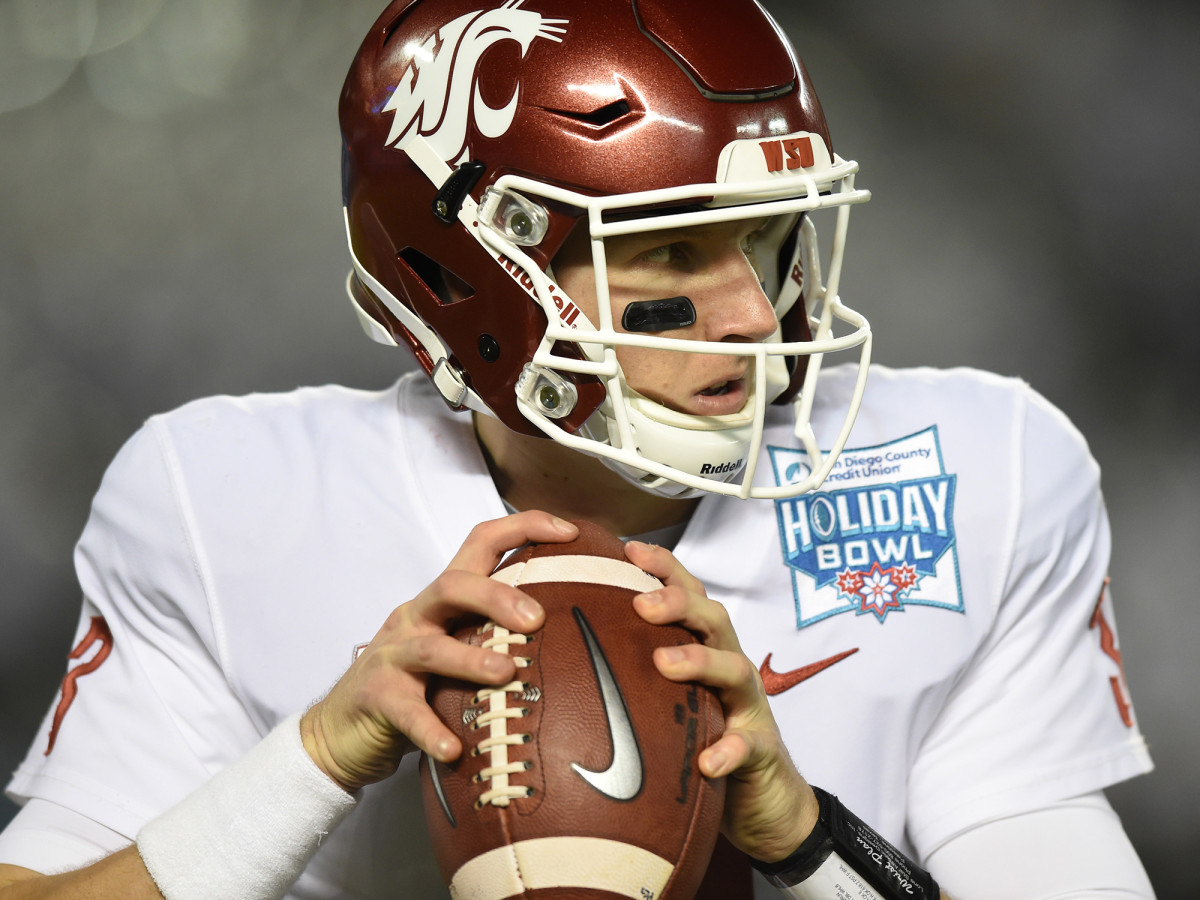
His family noticed other, seemingly minor changes in Tyler after the Arizona loss. He wasn’t as responsive to texts and calls the rest of the season, particularly in the lead-up to the Holiday Bowl, where he started in a loss to Michigan State. At one point, Mark asked Kym if she thought something was wrong with Tyler, and they determined he was just busy with classes and football and student life. That was the most difficult conversation, looking back. At a minimum, they had known something. “The reality is we missed it and we let him down,” his father says.
The last time his family saw Tyler, during a vacation to Mexico in early January, Kelly says “he was the happiest I ever saw him.” But when Tyler returned to school, his lack of responsiveness resumed. Kym sent a text asking, “Did you lose your phone” with a crying emoji. He replied not to worry. But after several additional messages went unanswered, she texted, “Is something wrong Ty?”
Kym sent another message on the afternoon of Jan. 16: Tyler please call me. That evening she found out he was dead. She looked back at every moment, wishing she had intervened more forcefully, tormenting herself over missed clues. When she looks back now at their pictures from Mexico, she sees a haunting sadness in Tyler’s eyes. Was that real? Or imagined?
The day after Tyler died, the family flew to Pullman. On the flight Kym silently wished the plane would crash and she’d be the only one hurt. Instead, upon landing, she steeled herself for meetings with medical examiners and detectives, learning that Tyler had left behind a note. Maybe, the Hilinskis thought, he had explained his decision, told them not to worry, absolved them of their guilt. Then they read the short message he had written and that only made them feel worse. That note—the Hilinskis do not want to publicly reveal the contents—offered no explanation, no I love you, no goodbye.
They learned that the school had quickly marshaled all available resources, getting counselors to the team within 40 minutes of when they found out Tyler died. Mark asked to address the Cougars with Kym, and when they assembled in the weight room, he looked out on young faces stained with tears. As the players hugged him and told their favorite Tyler stories, it became even clearer: His teammates didn’t have any answers, either.
During the Hilinskis’ time in Pullman they were able to glean details that only added to their anguish. How Tyler had searched with teammates for the rifle that he had already stolen. How police found a bullet hole in his car door and another in the room where he shot himself, surmising that he may have twice accidentally misfired the gun. But why had no one heard the shots?
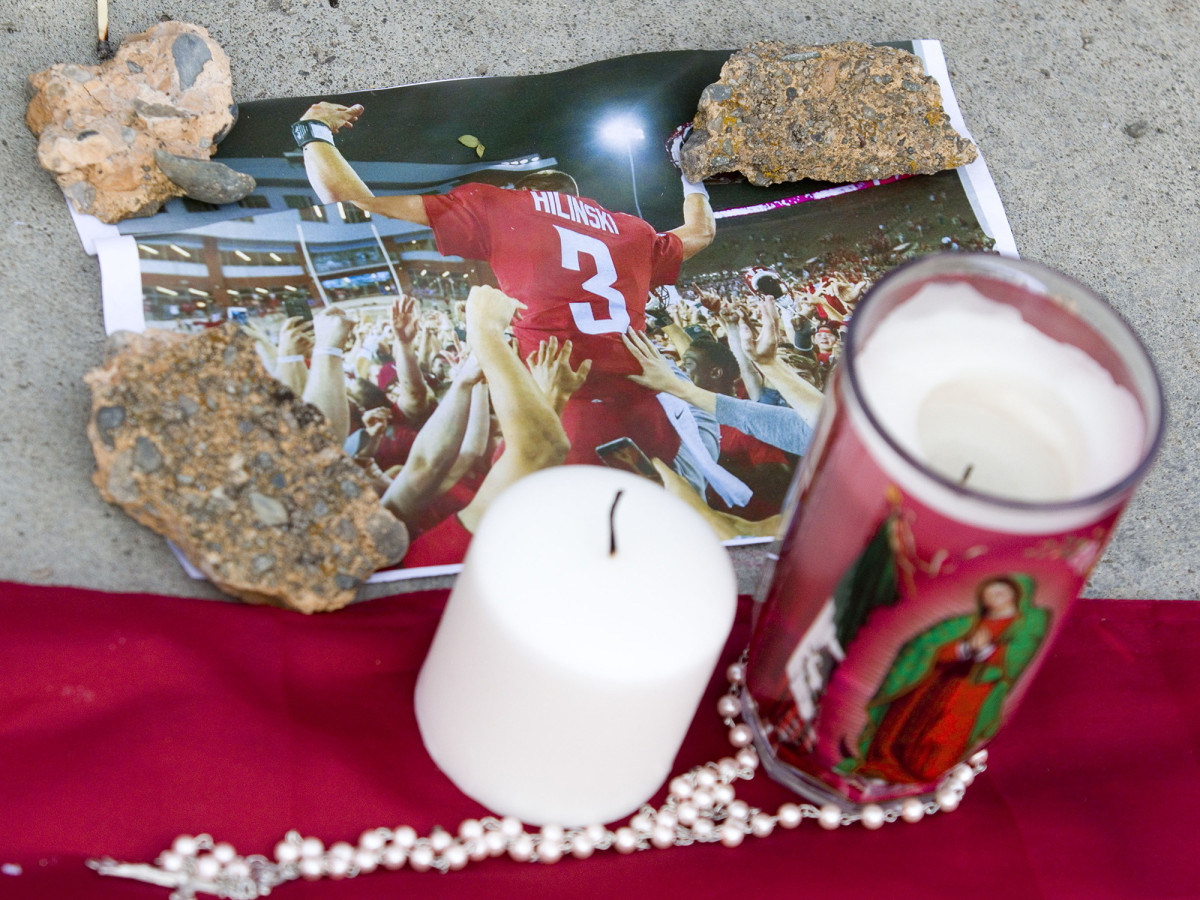
They cleaned out his locker, hoping to find Tyler’s phone. They never did and that tormented them, the care he took to dispose of the one thing that might give them some answers. They visited the funeral home, asking a priest to pray over Tyler’s body, while Kym touched his hand and kissed him one last time. They decided to send his brain to the Mayo Clinic to be examined. It was packed in ice and mailed away.
Eventually, they started to wonder if what they were so desperately looking for even mattered—the more they learned the less it felt like they understood. They attended the vigil for Tyler, together, at the cougar statue outside the stadium. Thousands gathered. Kym wore her son’s letterman’s jacket. The band played. She read every note. Touched every flower. Then she turned around and saw his teammates, standing right there, everyone in the crowd holding up three fingers.
Kym sent Kelly a text message right then, redefining their mission, giving them a new kind of why.
“Hilinski’s Hope,” she wrote.
“What is that?” he responded.
“Our why,” she typed back.
“Our why for what?”
“Our why for getting out of bed every morning.”
Knowing she would receive no reply, Kym sent texts to Tyler in the weeks that followed.
Jan. 22: Hi Ty. I miss you so much. I love you.
Jan. 24: Hi Ty. I wish you didn’t leave me. I miss you so much.
Jan. 27 (the date of his memorial service): Today is going to be tough Ty. I am so sad and I miss you. I love you Ty.
March 8: Ty. I am mad today. Sad too. But so mad. You didn’t have to go. We would have figured this out. I love you T.
The family trudged forward, starting the Hilinski’s Hope Foundation—a non-profit designed to promote awareness and education of mental health for student athletes—making bracelets, coffee mugs, water bottles and dog tags, all stamped with 3 and the number for the national suicide prevention hotline.

Then the test results came back. First, the Whitman County medical examiner called to say that Tyler’s toxicology report showed no trace of drugs or alcohol. (“That actually made it worse,” Mark says.) The Mayo Clinic’s findings arrived next. Kym read the sentence—“After reviewing the tissue we can confirm that he had the pathology of chronic traumatic encephalopathy (CTE)”—and started to reconsider her entire search. The diagnosis was Stage 1, the lowest level. But still, Tyler was 21 when he died, he hadn’t played that much in college and for most of his life he manned the most protected of positions. If he had CTE, anyone could. She read that depression was one symptom for Stage 1 and a doctor told her Tyler’s brain looked “like that of a much older, elderly man.”
She didn’t want to blame football—to be clear: she does not blame football—and yet the diagnosis also gave her family its clearest and, in some ways, only known factor in his death. “It helped us to know,” Kelly says, “that a) there was something wrong and b) that he was hurting and we couldn’t understand it. It was, O.K., we have a legitimate why. That’s enough of that.”
“I just don’t give a f---. I don’t care. I love this sport. This is not what hurt him. I’m going to do everything that Tyler wanted to do with football."
Even then, Mark and Kym’s guilt remained strong, maybe even stronger. Tyler had played linebacker before high school, had played quarterback with abandon, had perhaps suffered that concussion as a college freshman and told Kelly that the hit he had endured against Arizona had “rocked him.” He must have been suffering in ways they could never comprehend. Being able to label what happened didn’t change what happened. It didn’t change the fact their son loved football. And that didn’t change how the sport he adored might have contributed to his death. And, on top of all of that, their youngest son, Ryan was about to accept a scholarship to play quarterback for an FBS program, starting in 2019. If his life mimicked Tyler’s—same genes, same sport, same position—would he suffer the same fate? Would Mark and Kym stop him? Could they?
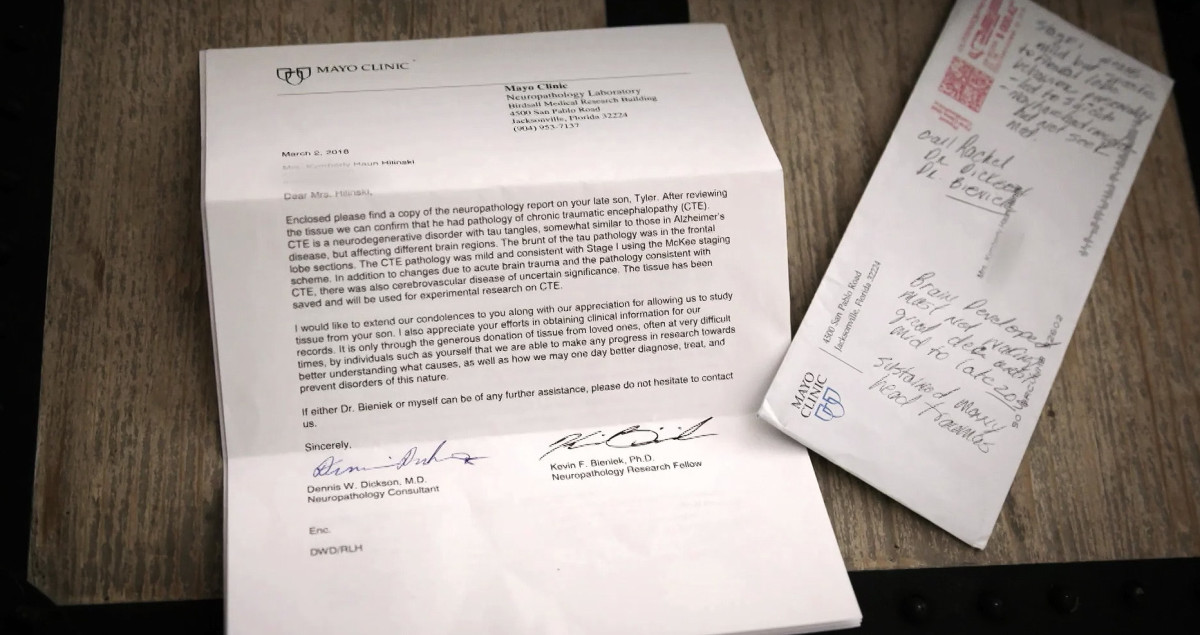
Ryan’s parents decided to inform his decision, rather than make it for him. If he were 10, Kym says, “he wouldn’t play football because it’s too scary for me.” But Ryan is almost 18. His parents and doctor-to-be brother all read research papers on traumatic brain injuries, searching for links between CTE and mental illness; they called experts, asked questions and presented Ryan with their findings. Mark told Ryan that he could stop football that day, that they would figure something else out. Or he could continue and they would never cease searching for the latest in helmet technology, the most protective equipment, the best recovery techniques. They would make an inherently unsafe game as safe as possible. “I just don’t give a f---,” Ryan told them. “I don’t care. I love this sport. This is not what hurt him.
“I’m going to do everything that Tyler wanted to do with football. I’m going to do that for Tyler, to honor him.”
Ryan had found the way he would remember Tyler. They all did, eventually. Kelly had wanted to specialize in cardiovascular medicine but switched his career path to neurosurgery and decided in part to study CTE. Mark continued to work at the software company but discovered more solace in the impact of Hilinski’s Hope. The family formed a board, began to research best practices and spoke to experts about the most efficient ways to utilize the donations that poured in. Kym continued the skydiving tradition, renaming it Ty-diving, and took a trip with Kelly across Washington state to honor Tyler’s memory and thank the companies who donated to the foundation.
Even if Ryan knew he wanted to keep playing football, he harbored concerns. He chose South Carolina, where he would wear number 3 and study sports psychology. He did all of that for Tyler, and yet, deep down, “It scared me a little bit,” he says, refusing to suppress his deepest fears the way his brother had. “It made me step back and think, O.K., what if I get hit a couple more times? Will I [go through] what Tyler was going through?”
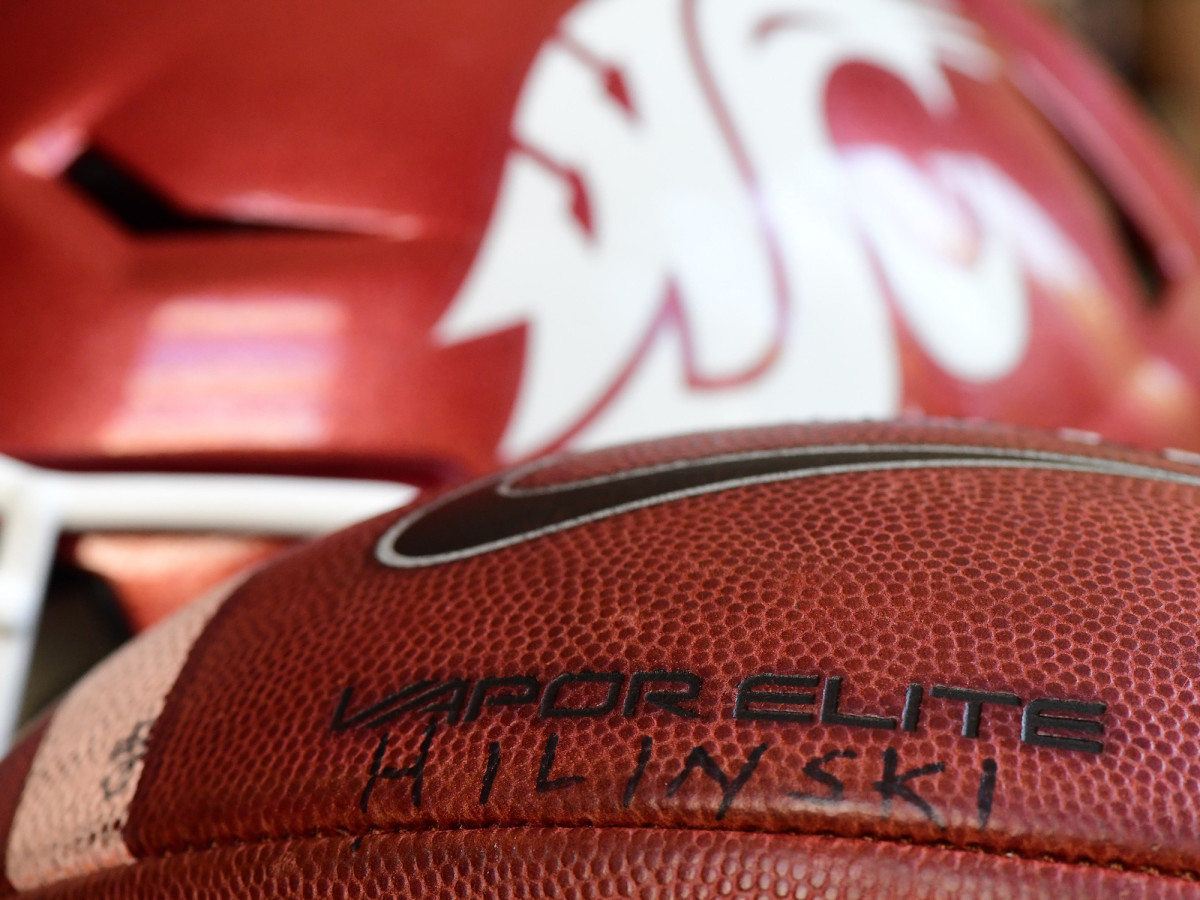
Kelly says scared isn’t exactly the right word to describe the family’s relationship to football now. Kelly views the sport as a welcome distraction from Tyler’s death. He says that when he has kids—if he has a son, he’ll name him Tyler—he will let them play football, without hesitation. He wants the boy to learn lessons best gleaned in shoulder pads, to find pain and overcome it. But it’s not that simple, not for any of them. “I’m worried,” Kelly admits. “I’m worried Ryan might face the same signs and symptoms that Tyler had and he won’t be the same person that he was.”
The Hilinskis ultimately made the only choices they felt they had. Once they found a purpose, they backed off their search for answers and bottled their unease. They wanted to believe football would help Ryan more than it would hurt him. To think otherwise would be too overwhelming.
In therapy the Hilinskis continued to redefine their new life’s mission, shifting away from the why as much as possible and toward their therapist’s suggestion: how. This new framework helped them move forward. How could they prevent another suicide? How could they build a model for mental health awareness in college sports? How could they shatter stigmas so that football players like Ryan could voice their darkest thoughts without fearing they would seem weak?
The work they now feel destined for crystallized as winter turned to spring. They kept coming back to the stat that most alarmed them, that for males aged 15 to 34 suicide was the second-leading cause of death. They received thousands of letters and social media messages, from around the world. One of Tyler’s former teammates reached out to Kelly, saying he had felt compelled one night to find his struggling younger brother and tell him he loved him and give him a Hilinski’s Hope bracelet. The next morning that brother told Tyler’s teammate he had planned to kill himself the night before. That helped, a little, to know that they were not alone, to know that Tyler was not the only person suffering. Nothing they learned would bring Tyler back, but the fact that he helped save a life—that he would help save lives—brought the Hilinskis some comfort.
The stigmas, they decided, needed to change first. The family teamed up with retired quarterback Drew Bledsoe, whose son John played with Tyler in Pullman. “As men we have to learn to TALK about how we are feeling. . . . ” Bledsoe wrote in an Instagram post. “Reaching out for help when we need it is NOT a sign of weakness. Trusting your friends and asking for help is the ultimate sign of STRENGTH!!”
Mindsets needed changing. That they knew. Athletes who seek out tutors when they’re struggling in class or find doctors to repair torn ligaments needed to also use the resources available to aid their mental health. First, they needed to be aware that mental health resources existed. Washington State did have counselors and doctors Tyler could have seen. But they also needed more resources, more counselors, more programs, more of everything.
Tyler never asked for help. They knew that, too. He took on the same load as his teammates: classes and homework and girlfriends and position battles—and he never told his family or his coaches what he told two people: That he was having “dark thoughts.” That he was struggling. His family members think that he didn’t want to burden them. “It’s magnified in the sports realm, that resistance,” Bledsoe says. “They’re supposed to be 10 feet tall and bulletproof.”
They’re supposed to be like Superman. The Hilinskis want to change that, and more and more people want to join their cause. The teammates that held a benefit concert for their foundation. The students who started a mental health awareness fund at WSU. The folks who want to create a mobile mental health center in Pullman, making therapists available to come to patients.
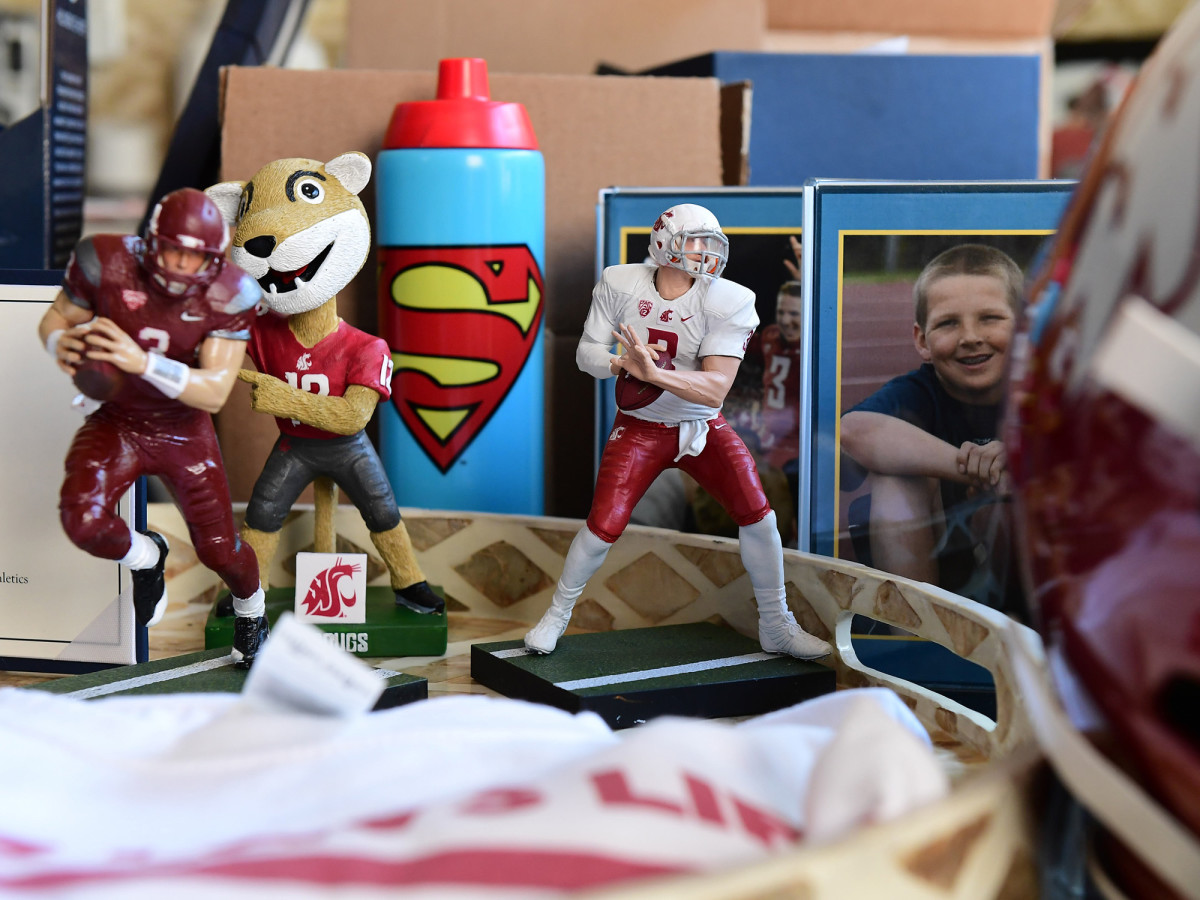
Mark believes his son would have had a better chance if the stigmas were less prevalent and better understood. He would start by banning guns in university-sponsored housing, even though it’s legal to carry certain firearms with concealed weapons permits in Washington state. “You have to understand the position I’m sitting in,” he says. “If that’s not there, he has to wait another day or week or hour, and sure, there are bridges to jump off and cars to crash if you really want to do something. But if he doesn’t have the gun, there’s certainly a better than zero chance of him surviving.”
He realizes how that might sound, the way gun enthusiasts would react. “This is where the stigma comes in,” Mark says. “Because the next answer is, well, he shouldn’t have stolen it. It’s that kind of thinking we have to change. We have to help people. Tyler needed help. And I’m not absolving myself of anything. You’ll never get me to feel less guilty than I am.”
Back at their house in Irvine, the Hilinskis rewatch the videos from Tyler’s memorial service. They’re all wiping away tears when the footage ends. Ryan is quick with a smile and reassurance. He throws his arm around his dad. “Does that mean we get to throw the old pigskin around?” he asks.
His father nods, and the family gathers its gear and heads outside, into the sun. They stroll over to a nearby park. Mark dons gloves for the passes Ryan zips his way. Kym walks Navy Blue across the field, far away from the throwing session. It’s still football, still hard for her to watch. “How in the world am I going to get through next year and then four more years and not worry every single time my son gets hit or taken down?” she says. “Ryan doesn’t need to see me cry or worry or be sick to my stomach. So I have to do what most moms do and just hide what I feel.”
She does just that on this cloudless afternoon as Ryan slings spirals to his dad. It’s one perfect throw after another. Mark hardly has to move. “Still got it,” Ryan deadpans as Mark shakes the sting out of his hands.
The session ends. The Hilinskis walk back toward the house, the football nestled under Ryan’s right arm. It feels like a happy moment, a return to normal, but it masks the darker feelings they each have. Sometimes Kym feels guilty just for smiling, or like a fraud for sending thank you notes to all the well-wishers, wondering just what she should be thankful for. Just walking past football lockers, especially those with the number 3 above them, reduces Mark to tears. Kelly, who was planning to live with Tyler after both finished school, must think about who he’ll room with now. Ryan wonders whom he’ll call when he needs advice.
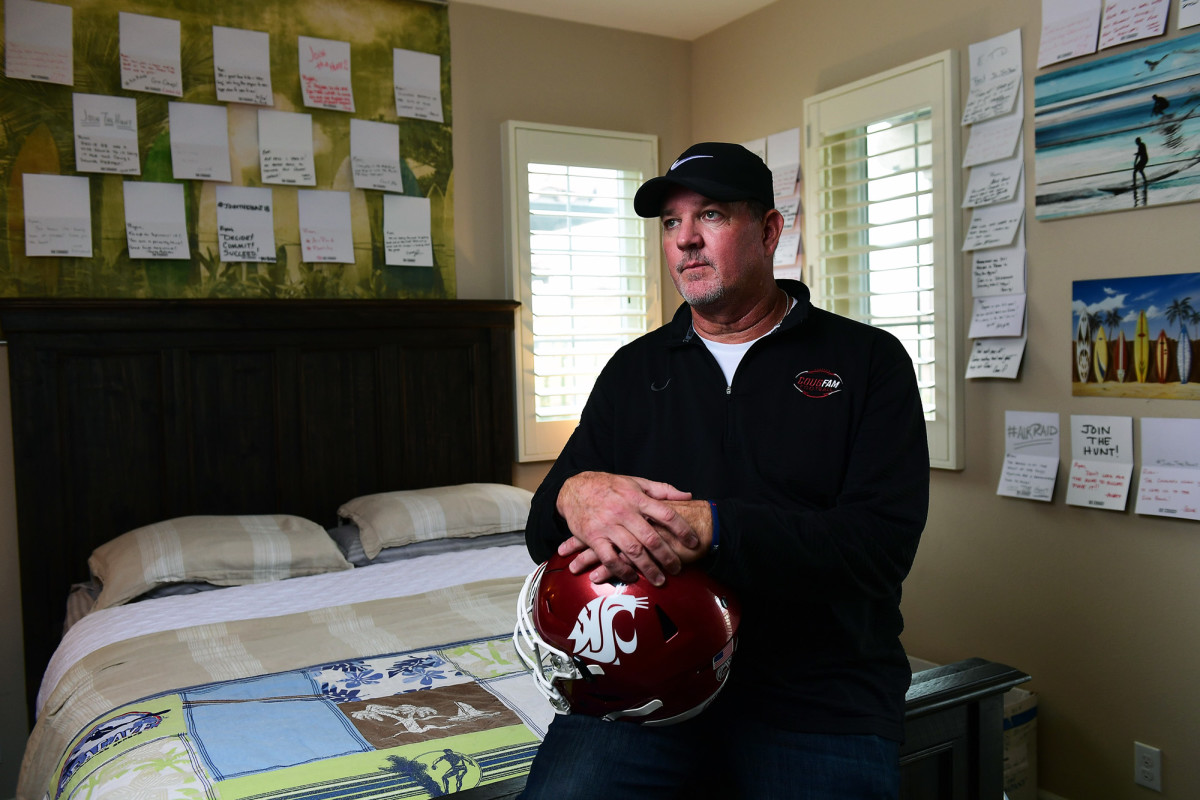
The future remains as uncertain as it felt in January, but the Hilinskis know they have to do more, do better, bolstering the purpose and meaning in Tyler’s death by holding up his life and why it mattered. And so they head into their living room, passing their favorite picture in the entryway, ignoring the envelope they refuse to open on the kitchen table. They may never open it, Kym says. Or they will, Mark says, and then they’ll read it once and burn it.
The last four months showed them that what’s in the report doesn’t matter. It never did. There’s no simple reason, no obvious why, nothing that will give the Hilinskis what they want—a second chance at helping Tyler. Instead, Ryan again throws an arm around his father’s shoulder and Mark wraps Ryan up, holds him tightly and whispers in his ear, “I’m sorry.” It’s another step into an uncertain future, and, for now, for as long as it takes, that will have to do.
If you or someone you know is struggling with thoughts of suicide, reach out to the National Suicide Prevention Lifeline 1-800-273-TALK (8255).
Watch Losing Tyler on SI TV. Our latest documentary chronicles the Hilinski family’s search for answers in the aftermath of tragedy.
Special reporting by Mary Agnant and Alex Agnant.
